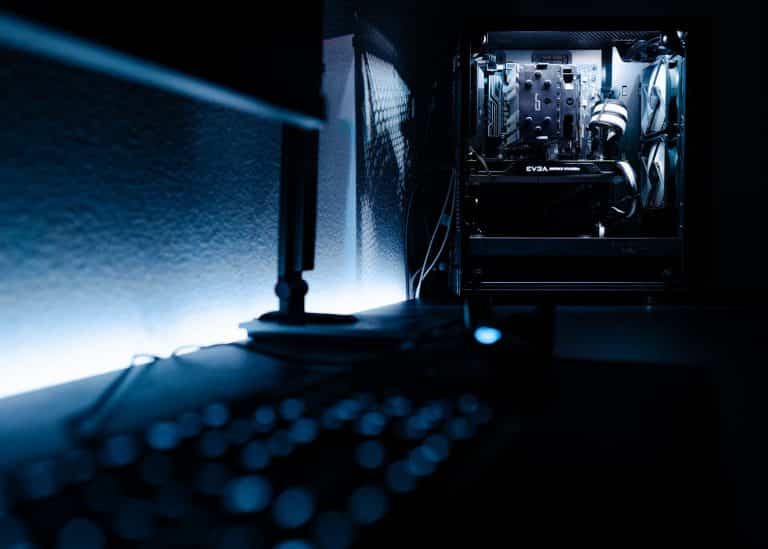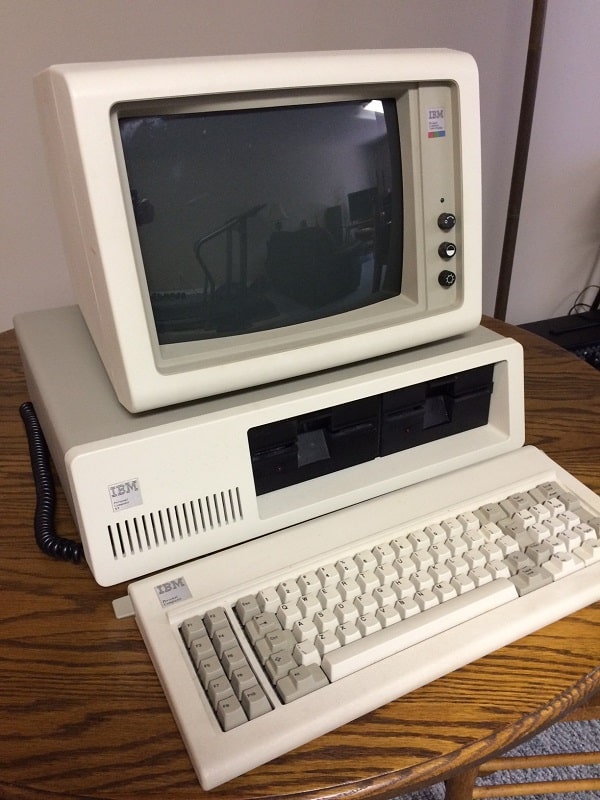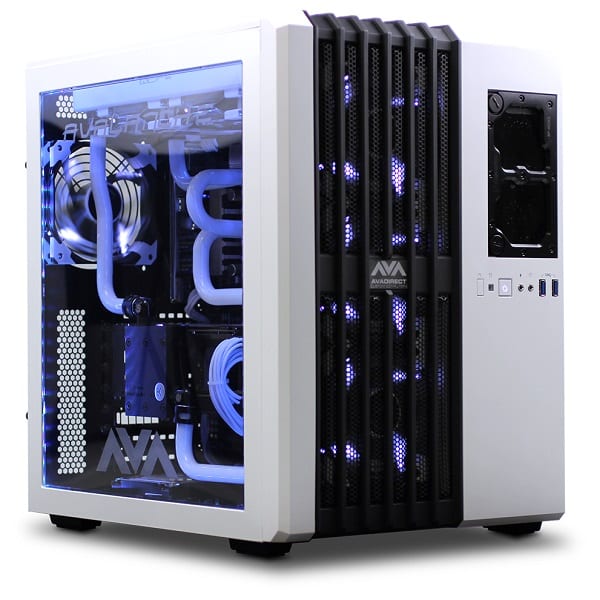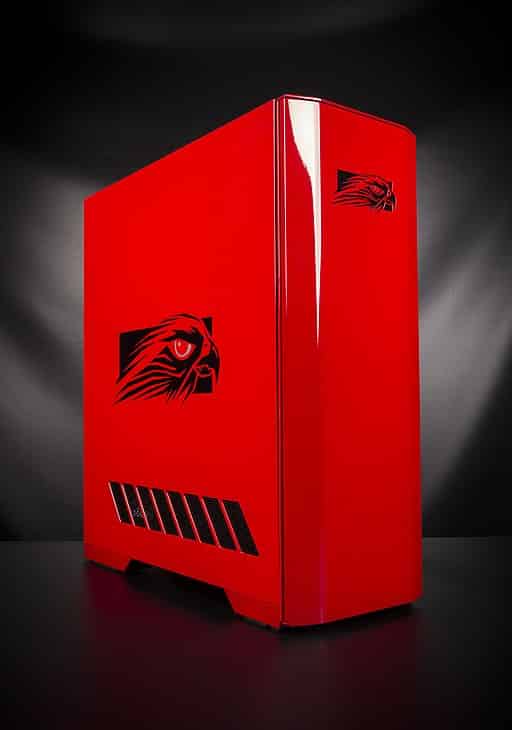If you’re looking to upgrade your gaming PC or build a new one, you might have encountered a few case models that are quite expensive. Your next question was probably “Why would I even spend so much money on a case? It’s just a metal/plastic skeleton for all the cool hardware.”
While PC cases don’t contribute much to the overall “gaming power” of your rig, they certainly do have tons of great advantages. Aesthetics being the most important one. Just kidding. It’s actually cooling and hardware safety. Still, the over-the-top prices might be too much even if we are aware of how important it is to get a proper gaming rig chassis. If you’re looking to get a high-quality gaming PC case on a budget, it’s quite possible.
But first, let’s talk about how PC case size became that important to gamers worldwide.
Contents
PC Case Size/Quality Importance
Not many PC gamers will agree that they are living in privileged times; some will forever miss the days of old-school LAN parties while at the same time bemoaning the gimmickry of the video game console industry and the impending wave of streaming game services such as the Google Stadia project.
There is no reason to take defeatist positions on the state of video gaming as a whole because PC gamers will always occupy one of the most exciting segments. Some PC gaming enthusiasts cannot even be bothered by eSports teams making a lot of money at tournaments broadcast on ESPN; all of this pales in comparison to the true passion of real PC gamers: the rig.
Just like the hot rod community cares deeply about chassis and exterior, PC gamers love cases to hold the hardware components of their powerful rigs. Thus far this year, we have seen interesting trends emerging in this regard; one of them consists of the “sleeper build,” whereby gamers hunt for old and unassuming cases, the kind that used to house 486 towers, to create an element of surprise.
Quite a few YouTube videos have been posted in this regard, and one of the most interesting consists of a project that transformed an old Mac G4 case, which happens to be huge and quite stylish, into a powerful gaming rig.
Whereas the world of personal computing seems to be getting smaller thanks to the advent of the mobile device revolution, many PC gamers are quite comfortable with large cases. In the sleeper build community, old Dell XPS towers, preferably in beige or shiny aluminum colors and with large power buttons, are highly sought after.
The sleeper build trend is not just about nostalgia and retro styling; the ample space and the sturdiness of old PCs, which were often built like battle tanks, make them ideal for various configurations, tinkering, drilling, and mounting.
Whether you want to join the sleeper build community or are just looking to get a new case for your custom-made rig, you have to keep in mind that size matters. The rule of thumb is that larger is always better because you can always add more parts and play around with the mounting, but there are other factors to consider:
#1 Interior Living Space
If you have enough room in the garage to fit an arcade video game cabinet, this consideration does not apply to you. You can easily hunt for full towers that provide enough chassis space to deck two or even three sides of the box with radiators. On the other hand, if your project is more along the lines of a home theater PC that is more sophisticated than a Chromecast device, a full tower case will look awkward and out of place in the living room.
#2 PC Gaming Rig Portability
Gamers who always find themselves on the go tend to carry laptops, and this is a smart choice, but not all feel comfortable with this arrangement. At tournaments where organizers set up monitors and inform players about connectors, resolution, display area, and refresh rates, many gamers consider taking their own rigs along with their favorite keyboard, mouse, or peripherals such as flight joysticks. Small form factor cases are about the size of a shoebox, thus making them more reasonable when traveling; they are semi-portable, but the only problem is that they limit the processing power and cooling you can fit into them.
#3 Scope of Your Build Project
This is when things get highly realistic. If you are looking to build the ultimate rig, one that will play Far Cry 5 without hiccups, GTA V with the new cinematic pack mod, and deliver a truly immersive experience with the Google Earth VR app for the HTC Vive, you will likely need a large case to accommodate all the cards, boards, fans, radiators, connectors, and additional cooling systems. Powerful rigs need room to breathe, and since you are already shooting for the stars, there is a chance that you will be upgrading in the future, which means you should go large now. On the other hand, if you are just looking to build a Linux media center that will act as a jukebox with streaming capabilities, the small form factor will be sufficient.
#4 Budget Considerations
Hands-on PC gamers who are into the sleeper build trend like to keep their costs down and be challenged at the same time; however, not everyone is willing to spend an afternoon of dumpster diving at the local telecom office to check for discarded PC server cases. Moreover, the more tinkering the project requires, the more you may have to spend on tools. If money is not a problem, you can get into more than sleeper builds; you can also look for ultra-large PC gaming cases with French doors that hide all cables and sliding trays for easy radiator placement.
#5 Styling and Looks
This is a very personal choice. Many gamers choose mini-towers because they look like old subwoofers or because they do not want their rigs to stand out too much. Others will limit computing power because they prefer small form factor cases that they can hide. We already know the sleeper build community is into retro looks. In general, PC case manufacturers that cater to the gaming crowd offer style right out of the box, and this may include lighting, flair, and see-through panels. If you really want to stand out, airbrushed cases with a lot of gloss are the way to go, but you will need to find an artist unless you already have these skills; painted cases are big hits at LAN parties.
Two-in-One PC Gaming Rigs
Here’s another emerging trend, and it is quite extravagant. In an age when you can set up dozens of virtual machines on a single CPU as long as the RAM and SSD can handle them, why would you want to build two CPUs into a single case? Some PC gamers will philosophically answer: why not? The bottom line is that such a project will require a very large case, preferably the top-of-the-line models made by manufacturers of PC gaming parts.




